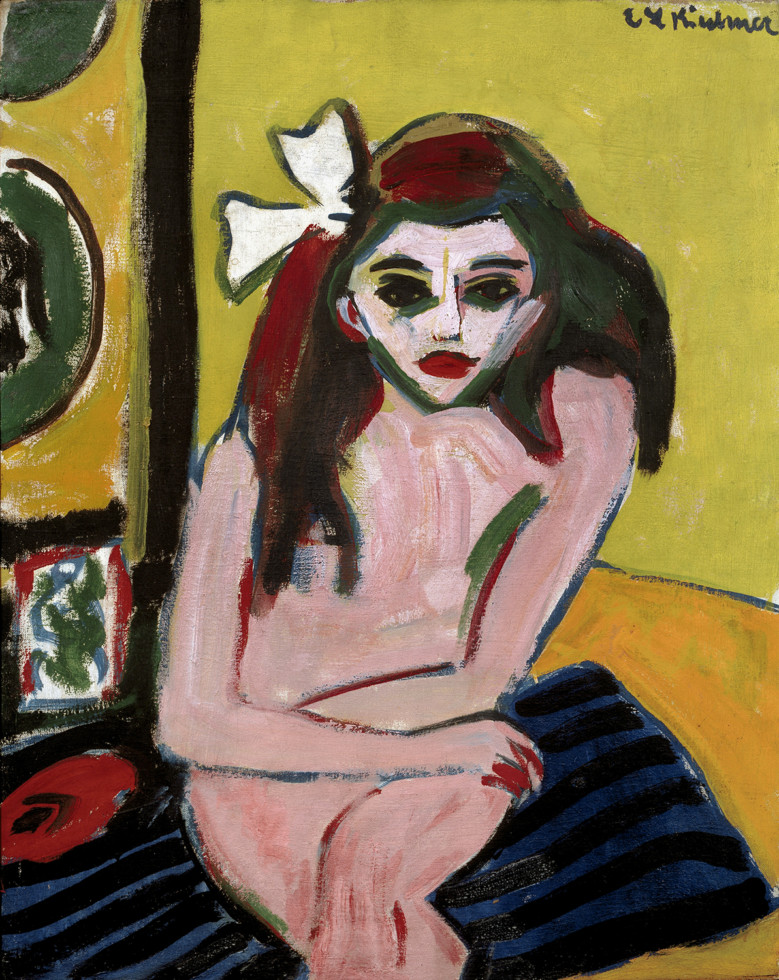
Ernst Ludwig Kirchner, Marzella, 1909–1910 Photo: Moderna Museet
“A suggestiveness that can make one crazy”: Ernst Ludwig Kirchner´s images of Marzella
Digital lecture and conversation
14.10 2021
Malmö
Art historical texts about the painting Marzella (1910) have often emphasized the rapid drawing and the bold colors, as well as the fact that the girl responds to the viewer’s or artist’s gaze, which has been perceived as challenging an objectification. The girl’s prepubertal body has also been interpreted as a projection surface for the Die Brücke artists’ longing for naturalness and undisguisedness. They sought liberation from bourgeois conventions and customs, not least in the sexual sphere, which made the young girl particularly interesting, as her sexuality was still considered unformed.
In recent years, various depictions of “Marzella” have been tried more from the girl’s perspective, which has led many to wonder what it really was like as a child to stay with a group of experimental adults, without parents and siblings. Did she feel safe? Was she happy? And why has the potentially vulnerable situation of this child not been noticed by observers and interpreters of previous generations?
Sherwin Simmons has long researched German expressionism and is the author of a number of research articles, including the acclaimed “A suggestiveness that can make one crazy”: Ernst Ludwig Kirchner’s Images of Marzella. In his lecture, we get a glimpse into a disturbing part of art history that may affect how we in the future relate to one of the most famous works in the Modern Museum’s collection.
The lecture is followed by a conversation between Simmons and Joa Ljungberg, curator of The Man with the Blue Face. There will be an opportunity for the audience to ask questions.
Date: Thursday 14 October
Time: at 18.00
Language: English
Zoom link to the lecture: https://us02web.zoom.us/j/84625780983 If Zoom doesn’t open automatically while clicking the link, please copy the link and paste it in your browser.
The lecture and the talk will be recorded and published later.
